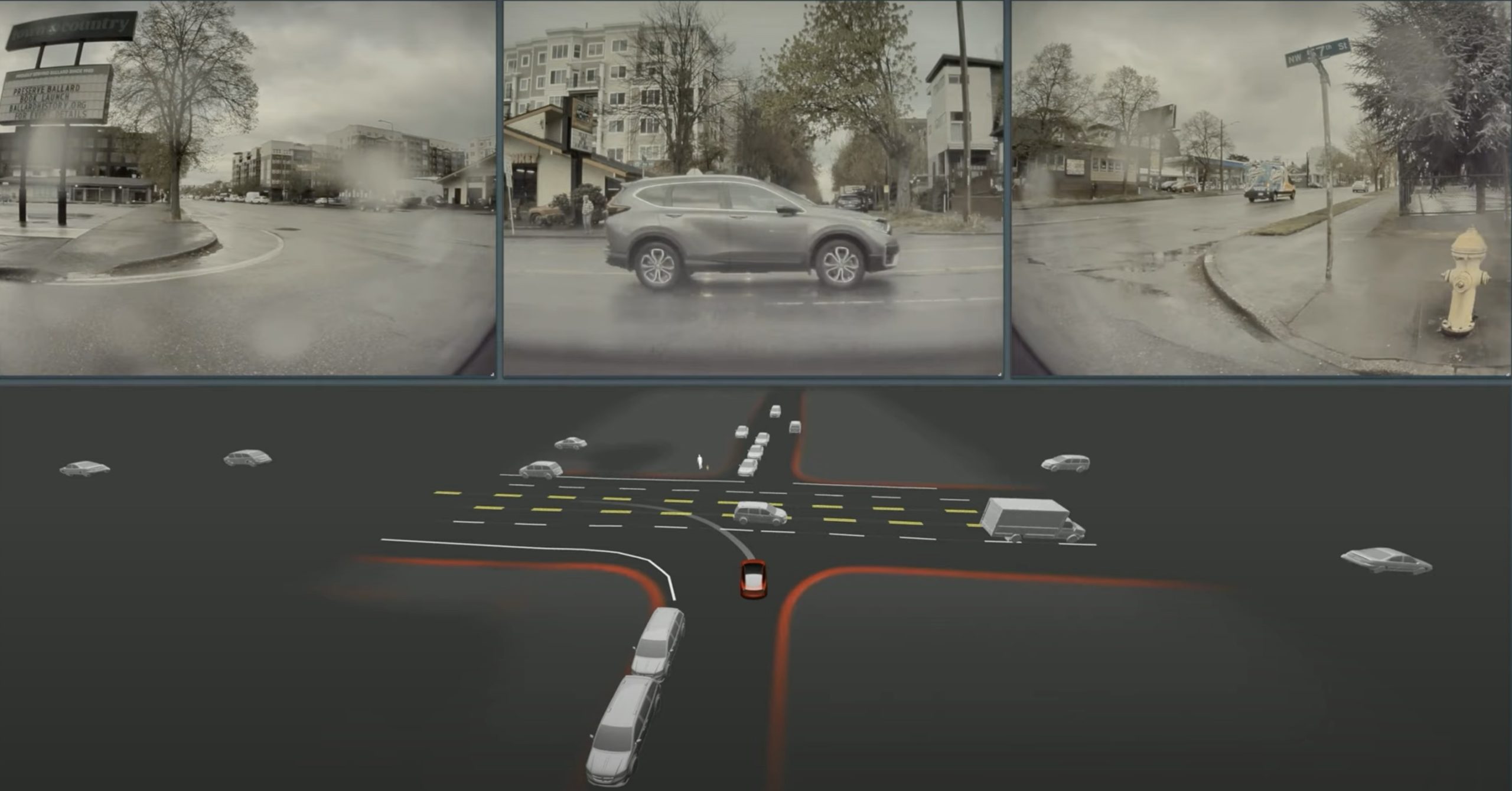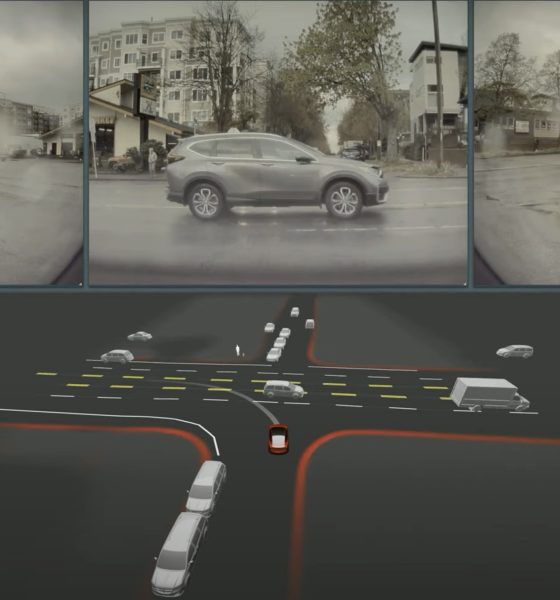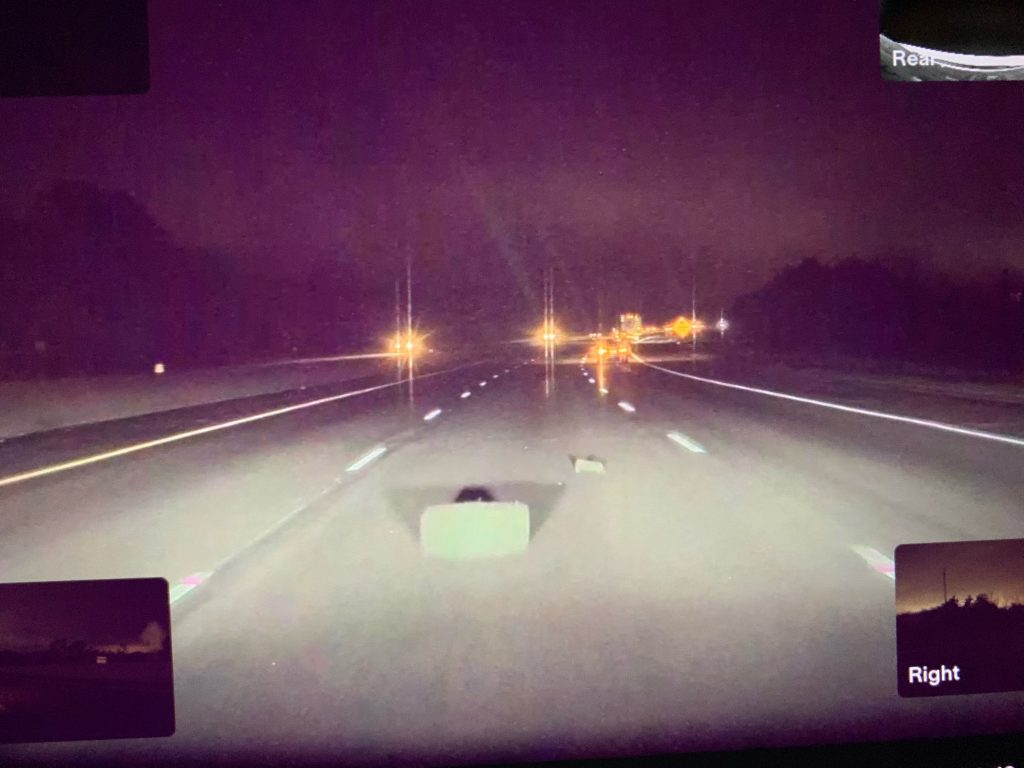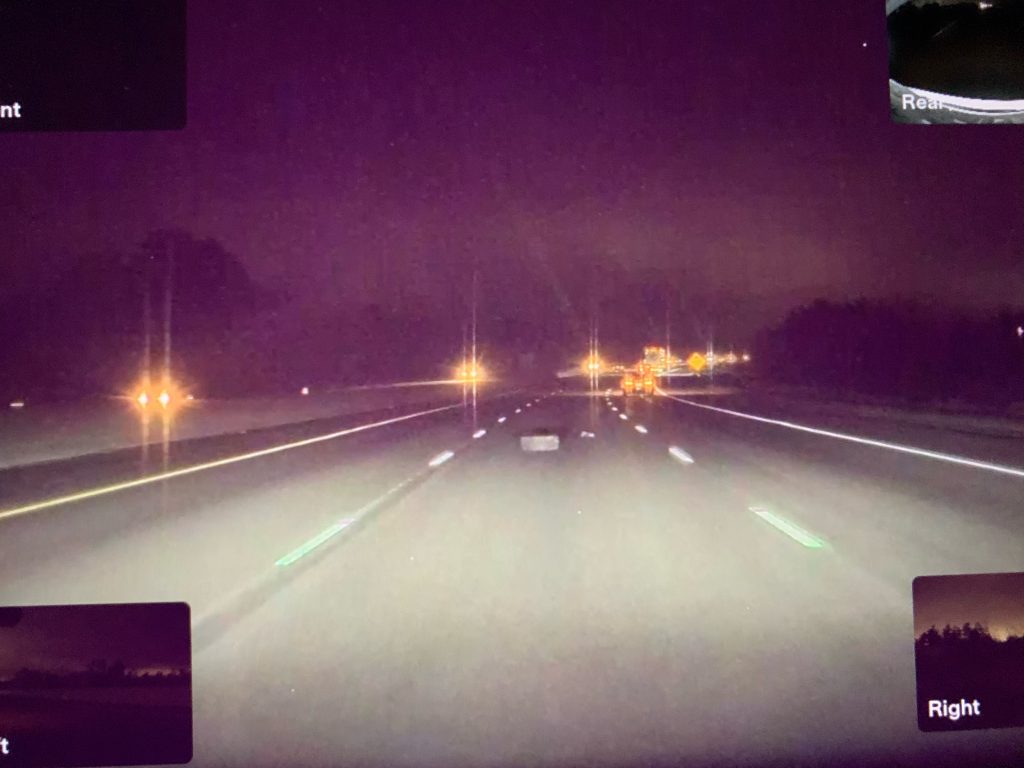

News
Tesla FSD Beta 10.69.3 release notes roll out
Tesla Full Self-Driving (FSD) Beta version 10.69.3 appears to have begun its rollout, and the release notes for the update have been shared online.
Like previous FSD Beta 10.69 update iterations, the current version is rolling out to a few testers. Tesla will most likely roll it out to more drivers in the FSD Beta tester pool over the next few days or weeks.
A quick read through FSD Beta 10.69.3’s release notes shows that Tesla has addressed some of the issues testers have brought up in past versions of v10.69. Specifically, Tesla improved lane selection and decreased the velocity error.
Past Tesla FSD Beta 10.69 Issues
In the past, Tesla FSD Beta testers have repeatedly emphasized concerns about lane selection and crossing through multiple lanes to enter a gated community or another road.
“I’m on the latest version [FSD 10.69.2.3], and unfortunately, my biggest issue is lane selection,” FSD Beta tester Harlan told Teslarati. “Turns coming up, and it never gets into the turn lane. There are times I have right coming, and it wants to get into the left lane, etc.”
Other FSD Beta testers have mentioned that their cars, while FSD is activated, have trouble crossing multiple roads to enter their gated community. Often the FSD Beta driver will disengage. Some testers also remarked that FSD Beta may be too aggressive while crossing multiple lanes.
Some other issues FSD Beta testers have mentioned that Tesla might have addressed in 10.69.3 or will address in the future are obstacle challenges and weather complications. A few testers have noted that FSD Beta has trouble when it rains, especially when some of the cameras are affected by the weather.
In version 10.69.2.3, some beta testers reported that their vehicles did not detect or recognize certain items on the road or in front of it. For example, two testers mentioned that their Tesla cars did not recognize the exit gate to their communities.


Another FSD Beta tester, Sandy, noted that his car did not detect a tire in the middle of the road while using FSD beta 10.69.2.2.
“I was on a major three-lane highway doing 120 km/hr with FSD autopilot engaged. It was dark as I had just left the city lights. There was a tire in the middle of the center lane. There was absolutely no response from FSD/autopilot, and I hit the tire as it was too late by that time to manually take over to avoid it,” he said.
Sandy shared that there was minimal damage during that test run. However, the tire tore off his Tesla’s front license plate and mount. There were also heavy black rubber marks along the lower air intake lip.
The verdict is still out with 10.69.3, but Tesla is listening intently to beta drivers and their concerns. The company is working hard for the wide release of FSD in Q4 2022. So, FSD Beta testers’ input on 10.69.3 probably holds a lot of bearing as Tesla prepares for the wide release.
What do you think of FSD Beta 10.69.3? I’d like to hear from you! Contact me at maria@teslarati.com or via Twitter @Writer_01001101.

News
Tesla starts showing how FSD will change lives in Europe
Local officials tested the system on narrow country roads and were impressed by FSD’s smooth, human-like driving, with some calling the service a game-changer for everyday life in areas that are far from urban centers.

Tesla has launched Europe’s first public shuttle service using Full Self-Driving (Supervised) in the rural Eifelkreis Bitburg-Prüm region of Germany, demonstrating how the technology can restore independence and mobility for people who struggle with limited transport options.
Local officials tested the system on narrow country roads and were impressed by FSD’s smooth, human-like driving, with some calling the service a game-changer for everyday life in areas that are far from urban centers.
Officials see real impact on rural residents
Arzfeld Mayor Johannes Kuhl and District Administrator Andreas Kruppert personally tested the Tesla shuttle service. This allowed them to see just how well FSD navigated winding lanes and rural roads confidently. Kruppert said, “Autonomous driving sounds like science fiction to many, but we simply see here that it works totally well in rural regions too.” Kuhl, for his part, also noted that FSD “feels like a very experienced driver.”
The pilot complements the area’s “Citizen Bus” program, which provides on-demand rides for elderly residents who can no longer drive themselves. Tesla Europe shared a video of a demonstration of the service, highlighting how FSD gives people their freedom back, even in places where public transport is not as prevalent.
What the Ministry for Economic Affairs and Transport says
Rhineland-Palatinate’s Minister Daniela Schmitt supported the project, praising the collaboration that made this “first of its kind in Europe” possible. As per the ministry, the rural rollout for the service shows FSD’s potential beyond major cities, and it delivers tangible benefits like grocery runs, doctor visits, and social connections for isolated residents.
“Reliable and flexible mobility is especially vital in rural areas. With the launch of a shuttle service using self-driving vehicles (FSD supervised) by Tesla in the Eifelkreis Bitburg-Prüm, an innovative pilot project is now getting underway that complements local community bus services. It is the first project of its kind in Europe.
“The result is a real gain for rural mobility: greater accessibility, more flexibility and tangible benefits for everyday life. A strong signal for innovation, cooperation and future-oriented mobility beyond urban centers,” the ministry wrote in a LinkedIn post.
News
Tesla China quietly posts Robotaxi-related job listing
Tesla China is currently seeking a Low Voltage Electrical Engineer to work on circuit board design for the company’s autonomous vehicles.

Tesla has posted a new job listing in Shanghai explicitly tied to its Robotaxi program, fueling speculation that the company is preparing to launch its dedicated autonomous ride-hailing service in China.
As noted in the listing, Tesla China is currently seeking a Low Voltage Electrical Engineer to work on circuit board design for the company’s autonomous vehicles.
Robotaxi-specific role
The listing, which was shared on social media platform X by industry watcher @tslaming, suggested that Tesla China is looking to fill the role urgently. The job listing itself specifically mentions that the person hired for the role will be working on the Low Voltage Hardware team, which would design the circuit boards that would serve as the nervous system of the Robotaxi.
Key tasks for the role, as indicated in the job listing, include collaboration with PCB layout, firmware, mechanical, program management, and validation teams, among other responsibilities. The role is based in Shanghai.
China Robotaxi launch
China represents a massive potential market for robotaxis, with its dense urban centers and supportive policies in select cities. Tesla has limited permission to roll out FSD in the country, though despite this, its vehicles have been hailed as among the best in the market when it comes to autonomous features. So far, at least, it appears that China supports Tesla’s FSD and Robotaxi rollout.
This was hinted at in November, when Tesla brought the Cybercab to the 8th China International Import Expo (CIIE) in Shanghai, marking the first time that the autonomous two-seater was brought to the Asia-Pacific region. The vehicle, despite not having a release date in China, received a significant amount of interest among the event’s attendees.
Elon Musk
Elon Musk and Tesla AI Director share insights after empty driver seat Robotaxi rides
The executives’ unoccupied tests hint at the rapid progress of Tesla’s unsupervised Robotaxi efforts.

Tesla CEO Elon Musk and AI Director Ashok Elluswamy celebrated Christmas Eve by sharing personal experiences with Robotaxi vehicles that had no safety monitor or occupant in the driver’s seat. Musk described the system’s “perfect driving” around Austin, while Elluswamy posted video from the back seat, calling it “an amazing experience.”
The executives’ unoccupied tests hint at the rapid progress of Tesla’s unsupervised Robotaxi efforts.
Elon and Ashok’s firsthand Robotaxi insights
Prior to Musk and the Tesla AI Director’s posts, sightings of unmanned Teslas navigating public roads were widely shared on social media. One such vehicle was spotted in Austin, Texas, which Elon Musk acknowleged by stating that “Testing is underway with no occupants in the car.”
Based on his Christmas Eve post, Musk seemed to have tested an unmanned Tesla himself. “A Tesla with no safety monitor in the car and me sitting in the passenger seat took me all around Austin on Sunday with perfect driving,” Musk wrote in his post.
Elluswamy responded with a 2-minute video showing himself in the rear of an unmanned Tesla. The video featured the vehicle’s empty front seats, as well as its smooth handling through real-world traffic. He captioned his video with the words, “It’s an amazing experience!”
Towards Unsupervised operations
During an xAI Hackathon earlier this month, Elon Musk mentioned that Tesla owed be removing Safety Monitors from its Robotaxis in Austin in just three weeks. “Unsupervised is pretty much solved at this point. So there will be Tesla Robotaxis operating in Austin with no one in them. Not even anyone in the passenger seat in about three weeks,” he said. Musk echoed similar estimates at the 2025 Annual Shareholder Meeting and the Q3 2025 earnings call.
Considering the insights that were posted Musk and Elluswamy, it does appear that Tesla is working hard towards operating its Robotaxis with no safety monitors. This is quite impressive considering that the service was launched just earlier this year.








